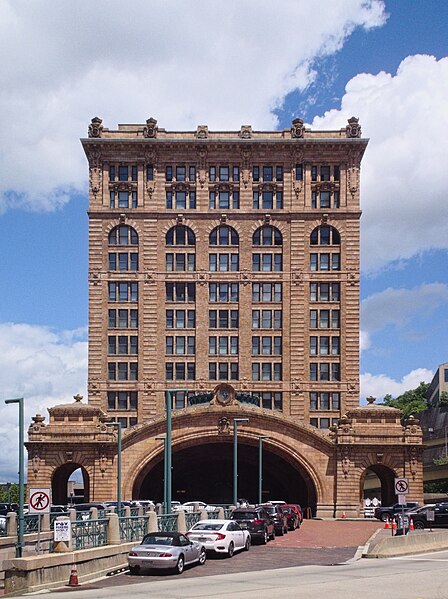
The busways in Pittsburgh are built mostly along old railroad right-of-way, and most of the stations are placed very near where the old commuter-rail stations stood. The Martin Luther King Jr. East Busway is unique in that the railroad still runs next to it; space for the busway came from the abandonment of extra parallel tracks on the busy Pennsylvania Railroad main line. Above, an outbound bus stops at the East Liberty station.

These views were taken from the Highland Avenue bridge across the railroad and busway. The bridge bears the Pennsylvania Railroad emblem in concrete.


The use of the old railroad right-of-way, which runs in a series of hollows below the main street level of the neighborhoods it goes through, makes the East Busway a true rapid-transit line, as much grade-separated as a subway.
Comments














